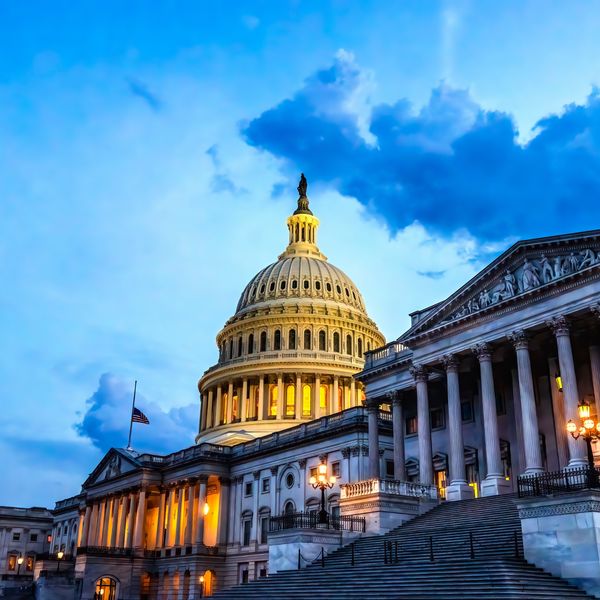Two proposals that would radically alter the current system for registering Americans for a future draft were introduced recently in Congress without any hearings or debate.
They raise practical issues about whether any draft today would even be possible.
As part of this year’s National Defense Authorization Act, the House voted this month to make registration with the Selective Service System of all draft-eligible men ages 18-26 “automatic.” In addition, the version of the NDAA on its way to the Senate floor would expand draft registration to include young women now, too.
Debate about the draft has typically been framed around whether the U.S. “needs'' a draft. Debate about women and the draft has been framed around whether women “should” be required to register. But the bigger question we face is three fold: will women sign up voluntarily (if in fact registration is not “automatic”), is “automatic” registration based on other databases feasible, and can registration or a draft – for men and/or women -- even be enforced.
When I was invited to testify before the National Commission on Military, National, and Public Service (NCMNPS) in 2019, I told them that “any proposal that includes a compulsory element is a naïve fantasy unless it includes a credible enforcement plan and budget… Women will be more likely to resist being forced into the military than men have been, and more people will support them in their resistance.”
Antiwar feminists have long identified militarism and war with patriarchy, and women have been an important part of movements against the draft even when only men were being drafted. At its national convention in 2022, the National Organization for Women adopted a resolution which “calls for an end to mandatory Selective Service registration” and supports the Selective Service Repeal Act of 2021.
The sole purpose of the Selective Service database is to enable prompt, provable delivery of induction notices to individuals selected by lottery, if and when Congress activates a draft. Provable delivery by certified letter or personal service, not by email or phone, is necessary to provide evidence of receipt sufficient to prove to a jury, beyond a reasonable doubt, that failure to report for induction was “knowing and willful” — an element of any criminal violation of the Military Selective Service Act.
I was one of only twenty people prosecuted in the 1980s for openly refusing to register for the draft. Our public statements were used to prove that our refusal was “knowing and willful.” Non-registrants would learn from our show trials that there was safety in silence as well as safety in numbers.
Compliance has continued to fall, and enforcement of the registration requirement was abandoned in 1988. As a result the Selective Service database is so inaccurate and incomplete that it would be “less than useless” for an actual draft, as Dr. Bernard Rosker, the former Director of the Selective Service System, testified to the NCMNPS.
Men are currently required not only to register when they turn 18, but also to report to the Selective Service System, within ten days, every time they change their address until they reach age 26.
“Absolutely nobody” tells the Selective Service System when they move, as the Chair of the House Armed Services Committee noted in his statement opening a hearing with members of the NCMNPS in 2021. Most induction notices would either be returned as undeliverable or delivered to registrants’ parents at addresses where registrants no longer live. And no doubt many parents, as I pointed out to the NCMNPS, would destroy an induction notice to protect their child against being drafted.
The Selective Service database does not include many young men who don’t register voluntarily, especially in states such as California, New Jersey, Pennsylvania, and Massachusetts, which don’t require registration with Selective Service as a condition of obtaining a driver’s license. But laws in other states that automatically register drivers with the Selective Service System produce the opposite error of over-inclusion.
For example, not all driver’s license holders are eligible to be drafted. Foreign students and H-1 visa holders, many of whom are draft age, are considered “non-immigrants” who are neither eligible to be drafted nor required or permitted to register. Registering all applicants for driver’s licenses in some states has produced a list with hundreds of thousands of draft-ineligible non-immigrants who could legally ignore any induction notice.
“Automatic” registration sounds seductively simple. In practice, trying to base Selective Service registration on other existing federal databases would be a recipe for an even greater fiasco.
Aggregating and matching data collected for unrelated purposes and maintained in different formats is hard. The track record of large federal information technology projects is poor.
The bill that has passed the House would grant the Selective Service System unprecedented authority to issue regulations requiring any other federal agency or entity to hand over, in bulk, any records that might identify or locate potential draftees.
At a minimum, this would need to include Social Security and IRS records. Immigration and visa records would also need to be matched and parsed by Selective Service to separate draft-eligible immigrants from draft-ineligible non-immigrants. Still, the resulting list would have out-of-date addresses for many potential draftees.
In the U.S., unlike some other countries, only individuals subject to Selective Service registration or under court supervision after being convicted of a crime are required to report to any government agency each time they change their address.
The NCMNPS studied the option of “passive” registration for a draft based on other existing databases, but eventually ruled this out as an option. A memo from the NCMNPS research staff, released in response to one of my Freedom Of Information Act requests after the NCMNPS disbanded, concluded that no other federal agency even tries to include up-to-date addresses for all U.S. residents in its records.
Only those who were assigned male at birth are eligible to be drafted or required to register with the Selective Service System. But no current Federal database reliably indicates sex as assigned at birth.
Individuals can self-select their preferred gender marker – “M”, “F”, or “X” – to be used on U.S. passports and Social Security records, without regard for sex as assigned at birth. The same is true of driver’s licenses in California, and of records kept by a growing number of other states and foreign countries. Births are recorded with state and local offices, not federal agencies. No state or federal agency has copies of birth certificates for those born abroad.
Therefore, trying to determine who is, and who is not, required to register would lead to a gender-judging quagmire.
The perceived availability of a draft enables planning for unlimited wars, without having to worry about whether people will be willing to fight them. But it’s long past time, as I told the NCMNPS, to recognize that — like it or not —draft registration has failed. A draft is not a viable policy option to rely on in military planning, even as a fallback. Rather than making futile attempts to salvage, much less expand, the current failed registration system, Congress should repeal the Military Selective Service Act and end contingency planning and preparation for any sort of draft.- 'Inflation': the Trojan horse for runaway military spending ›
- Congress moves to make Selective Service automatic ›
- Summer of the draft: what govt and think tanks are planning and why | Responsible Statecraft ›
- US military draft sign-ups plunge in 2 years | Responsible Statecraft ›
- Congress quietly moves US closer to military draft | Responsible Statecraft ›
















